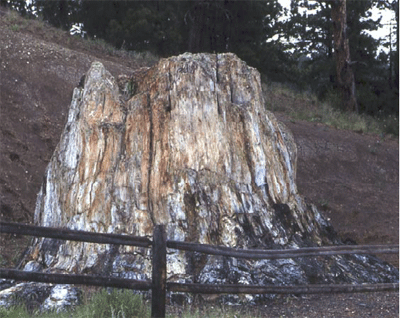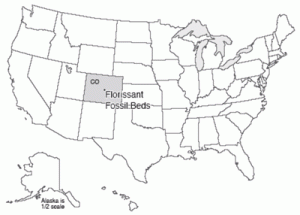Evolution and Florissant Fossil Beds
Evolution and the Florissant Fossil Beds
In south-central Colorado, at Florissant Fossil Beds National Monument, you can visit a unique deposit of fossil trees, leaves, insects, birds, fish, and more from about 35 million years ago. At that time, a lava flow dammed a stream to form a lake. Then, repeated volcanic eruptions dropped silica-rich ash into the lake, making the water silica-rich and favoring the growth of diatoms, single-celled algae that have silica shells. When a leaf or dead bug fell into the lake, huge numbers of diatoms quickly grew on it in very thin layers, protecting it from decay until it was buried by paper-thin layers of ash and mud. Like flowers pressed in a phone book, the flowers of that ancient time can still be seen clearly. So can the dragonflies, bees, and mosquitoes.
There are, however, certain differences between some of those creatures and similar ones that live today. Remember, back at Arches National Park in Module 9, we learned about the law of faunal succession—when rocks are placed in order from oldest to youngest, the types of fossils in the rocks also fall into order, becoming more like things alive today in younger and younger rocks. The Florissant rocks are relatively young, and their fossils are immediately familiar to modern people, but the fossils are not identical to modern species.

The law of faunal succession suggests the possibility of evolution but does not prove it by any means. One early theory held that many creations and extinctions occurred over geologic history, something like the history of automobiles. One type of automobile does not give birth to another; new ones are created. But you can place the automobiles in order from oldest to youngest, and the younger they are, the more they look like modern automobiles. This idea was called catastrophism in geology. The fundamentalist interpretation of biblical creation is a one-event form of catastrophism.
